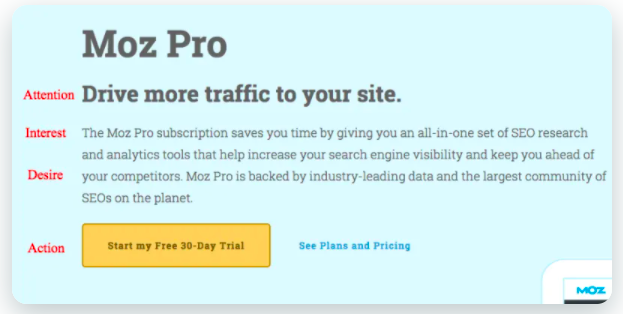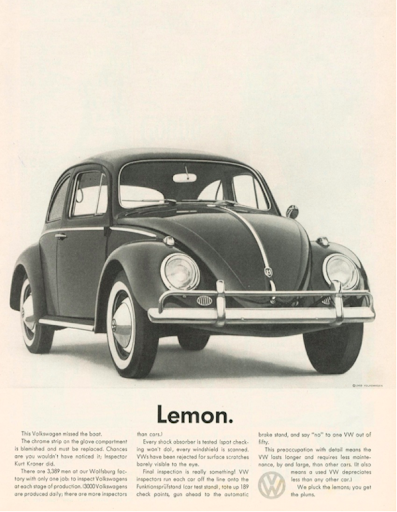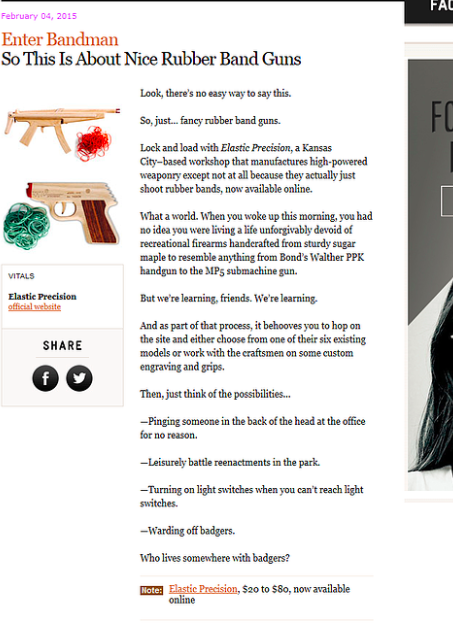Direct mail has a bad rep.
How often do you get a sales leaflet through the door and actually read it?
I’m guessing hardly ever (how much can a person read about double glazing?)
But when it’s done right, it can be a powerful cog in the campaign mix.
Arguably one of the greatest copywriters, Gary Halbert, went to prison in the 1980s for tax fraud. And from there, he wrote a series of letters to his son, which have become known as The Boron Letters since they were published.
Now, I have no idea what you imagine prison letters from father to son to be like. But I would think that they usually don’t contain the secrets to powerful direct mail marketing.
And just for you, I’ve completed the enjoyable task of gleaning nine copywriting secrets from The Boron Letters. All straight from a copywriter who generated millions in sales from one single letter.
Let’s dive in…
#1 – Know your audience
Halbert’s top advice to entrepreneurs was to find a market before making a product.
He said that your whole brand set-up must have your audience at the centre.
Amazon’s CEO, Jeff Bezos, is known for placing an empty chair in meetings to represent the customer so their decision-making never strays from putting the customer first.
As a copywriter, it’s your responsibility to get to know your clients’ customers and do your research well before you put pen to paper.
If you find your copy isn’t quite hitting the mark, it could be because you’ve not understood your audience well enough.
Here’s how to do it:
- Carry out buyer interviews. And get to know what makes your audience tick. Unsure how to do it? Have a read of this helpful article from Circle Studio.
- Survey your customers. This is where you can ask multiple-choice and open-ended questions to find out how they feel about your brand and your offering as a whole. This can help to guide your copy moving forward.
- Use Voice of Customer Data in your copy. You will need to take your time listening to how your customers talk. This can be from your buyer interviews, focus groups, online reviews, social channels etc. The main goal is to use VOC data in your copy so it will truly resonate.
And that’s a nice little segway to our next secret…
#2 – Make it personal
Halbert makes a point of the fact that including the date, time of writing, and his son’s name in the salutation creates intimacy and immediacy between writer and reader.
Why does that matter?
Because we’re all self-centered creatures who know that time is a finite resource. Your reader needs to believe your ad/email/sales page is for them and has value.
In our copywriting academy, we like to talk about a little technique called the power of YOU. Don’t talk about your brand or your product. Talk TO your customers about why they need it and what problem it will solve.
Florist Bloom & Wild have got some good feedback from their thoughtful marketing and their emails totally nail this personal vibe.
Hello
I’ve noticed you’ve been loving Bloom & Wild. We like you a lot too!
To show you how much – and to help you brighten someone else’s day – I want you to access our Black Friday offer before anyone else.
How about some letterbox flowers for that December birthday? Or tick someone off your Christmas list with a gift from our new winter collection. It’s filled with lots of seasonal goodies, like festive flowers, tiny trees and scented wreaths. There’s something for everyone!
Enjoy the rest of your week.
Lucy
That conversational tone really helps to reel you in, don’t you think?
#3 – Write successful copy out by hand
Halbert advises his son to read advertisements or direct mails that are the best of the best. But with one key detail.
You probably know that reading a lot is necessary for all writers who want to up their game. However, Halbert goes further and tells his son to copy out good writing, word for word, with a paper and pen (remember those?).
He says: “This isn’t just an empty experience. This is a way of internally imprinting on your mind and body, the process of good writing.” Source: The Gary Halbert Letter.
Whether it’s digital or analogue, keep a swipe file of great copy you come across and set a time in your diary to read it, analyse what made it work, and write it out.
#4 – Use ‘nugget notes’
Here we’re going to delve into the really good stuff with the next three copywriting secrets – Halbert’s process for writing a piece of direct mail copy.
Step 1
Collect everything you can think of related to the product or promotion.
Step 2
Grab your swipe file and any other idea generators you have, such as a list of good headlines.
Step 3
Write nugget notes based on all the above.
Step 4
Rate the notes based on your own system (Halbert suggests using stars, give three for the really good ideas).
“What the heck is a nugget note?” I hear you cry! Halbert states that your notes should be little nuggets of anything that pops into your mind. It might be one word or a phrase. Some might not even make sense when you come back to them. That’s ok.
The perfectionists among you might be quivering in your squeaky clean boots right now. Stay with me (and Halbert) and you’ll see why writing your ‘nuggets’ of ideas in this way will combine to produce a great big gold brick of an idea when you’re done.
#5 – Have a break, have a KitKat
Once you’ve assembled your notes, Halbert says you’re now ready to…
Walk away.
Do an Elsa and let it go. For a day or two. If you’re not gifted with enough time to leave it that long, try to write your notes as soon as you can and go for a brisk walk.
Then, an award-winning sales idea will land in your lap as you’re on your walk, loading the dishwasher, or queueing for your lunch. Something as memorable as Kitkat’s tagline.
(Chocolate snack bars are optional during this step.)
#6 – Use formulas
Now, you might think you’re a creative Yoda who can fly by the seat of their brown robe and create stellar copy every time but the fact is, there are formulas in copywriting that work.
You’d be smart to learn as many of them as you possibly can. This will make life quicker and easier, give you rules you can sometimes break to good effect, and will help you overcome the blank page on those days when the force is not with you.
Halbert talks his son through the AIDA marketing formula, which is as follows:
A = Attention
I = Interest
D = Desire
A = Action
Here it is in use.
Source: Copyhackers
At TCC, we believe copywriters should be like a fusion of Shakespeare and Einstein. A compelling blend of art and science goes into our copy and formulas provide us with some sturdy building blocks for the best creative ideas. You don’t need to follow them by letter every time. But they’re a great starting point.
The above image is from Copyhackers’ comprehensive post on a load of copywriting formulas, check it out.
#7 – Make it a pleasure
Listen up. I’m about to tell you Halbert’s most important copywriting secret. The one he says will get you 500% more readership.
Here it is.
Wherever possible, make your copy look like something your audience would normally give their attention to.
We’re getting pretty hardwired to ignore ads these days. Halbert advises his son to study editorials when honing his ad writing skills because that’s what people are reading.
VW nailed this approach way back when.
Source: Swipe File
But wait, there’s more you can do to make it a pleasure. The Boron Letters refer to a phenomenon called ‘eye relief’. Nope, not another name for glasses.
Your copy should be easy to read. Skimmable. Varied.
Lots of white space.
Here’s another example for you because I like you. This piece of email copy from Urban Daddy is utterly pleasurable. See if you can spot the techniques they’ve used.
#8 – Read it out loud
These final two points are short and sharp but no less important.
Read your copy out loud. As you do that, you will hear the words that are lumpy and bumpy, like walking over a stony path. Those need fixing.
You’ll also notice the sentences that are like skating across a polished, marble walkway. Leave those in.
#9 – Remember, the very best writing goes unnoticed
If you’re trying to be super smart and impressive, you will probably fall down. It’s always the way when you’re out with friends and attempt some incredible stunt, or clever joke. You rarely come out tops, am I right?
Let’s move on.
Now I’m going to directly quote Halbert here (for selfish reasons because if I copy out his words I’ll write better).
“A good writer is one who makes things perfectly clear… If you’re writing for applause… you will go home with empty pockets!” Source: The Gary Halbert Letter.
Summary
The Boron Letters urge us copywriters to always remember our ultimate purpose is not just to give people a pleasurable experience. It’s to compel them to action. The pleasurable experience (or intentionally uncomfortable) serves that purpose.
Forget the pat on the back and the possible advertising award.
Remember that empty chair. The customer.
By learning some formulas, learning from the best, and following a process, you can write in a way that causes them to do something.
And that’s what makes you a successful copywriter.
Jeni


